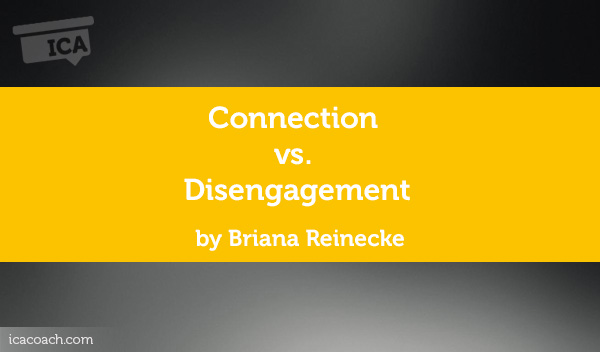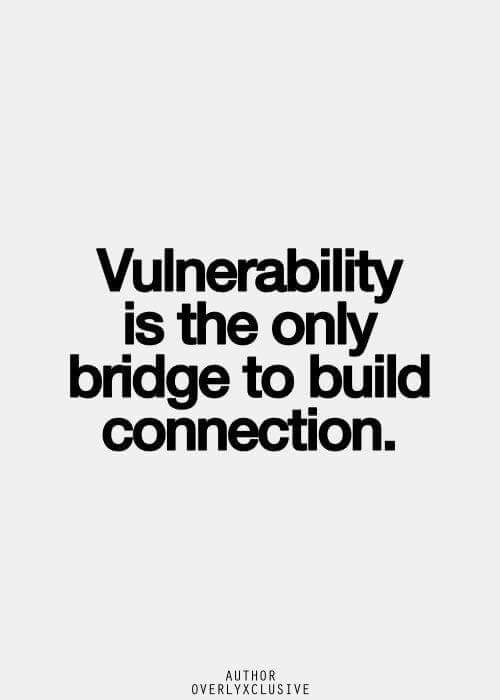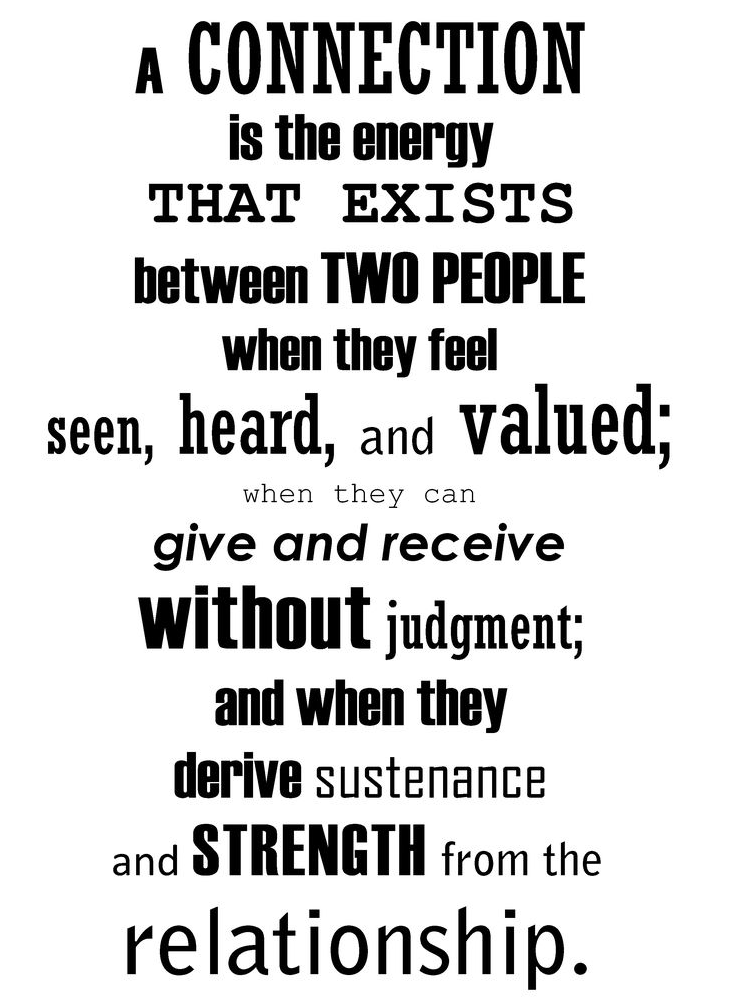
A Coaching Power Tool Created by Briana Reinecke
(Life Coach, UNITED STATES)
What is the latest memory you have when you lost track of time and found yourself experiencing true joy. When you felt at ease and the work and relationships in your life flowed simply and naturally? This occurs when we are able to connect with ourselves, the moment we are in and the people who are in front of us.
The definition of connect:
 In today’s society we jump at the thought of our phone buzzing in our pockets from a text, call, or any number of social media notifications. We worry about keeping busy, working longer, harder, pushing ourselves through exhaustion and hunger. This causes us great distraction during our days of errands, work, meals, and time with our loved ones. We get caught up and before you know it five years have past, your kids have grown up and you are left wondering where you were for all those moments we are told to cherish. We believe that technology has connected us more deeply, and in a sense it has with long distance relations. But we loose sight of not only the people right in front of us but also nature, the moments in-between the grand celebrations and mile stones and being in tune with our own intuition and emotions.
In today’s society we jump at the thought of our phone buzzing in our pockets from a text, call, or any number of social media notifications. We worry about keeping busy, working longer, harder, pushing ourselves through exhaustion and hunger. This causes us great distraction during our days of errands, work, meals, and time with our loved ones. We get caught up and before you know it five years have past, your kids have grown up and you are left wondering where you were for all those moments we are told to cherish. We believe that technology has connected us more deeply, and in a sense it has with long distance relations. But we loose sight of not only the people right in front of us but also nature, the moments in-between the grand celebrations and mile stones and being in tune with our own intuition and emotions.
We need to remember that any moment could be one to remember but we don’t give it the chance. We are ingrained that time is money and you can sleep when you’re dead. But what would it look like for you to put down that phone, swap your desk for a table at lunch with friends? What about bringing your focus to your breath, plant your feet firmly on the ground and look people in the eye when you are speaking to them?
While running this rat race we loose authentic connection with ourselves and others and our perspective turns to disengagement.
The definition of disengagement:

First with ourselves and the nature of who we are, listening to our true instincts while making both small and large decisions. We adapt to the negative self talk that goes on in our mind running in circles of the “should’s” and “should nots.” We loose sight of what our own authentic happiness when we are busy putting on everyone else’s oxygen mask before our own. But in the process we are disengaged with the ones we love. We become too busy to make connections with our friends and family because we believe we are doing them a favor by working later, harder and multitasking until we burn out. We run that race to ultimately give the best for our families when in the end, what they really need is our best selves.
Connection vs. disengagement I believe is a powerful perspective change because therein lies the root of most of our problems. When we carry out chaotic lives our perspectives become distracted and clouded when we are in need to make heavy and thoughtful decisions.
The daily actions you take turn into a habit which than is engrained into you as a behavior and can make way into your beliefs, values and your character. When you make a decision it is rooted in the values that you subconsciously and consciously carry. When you are at default to be disengaged in your life you are than unable to see all of the options that clearly lie in front of you to make the most informed decision.
When we lean into connection we also become open to vulnerability and engagement. The first is unconsciously why most people are keen on keeping busy lives, they fear becoming vulnerable with others and themselves. But when we allow ourselves to become engaged and vulnerable that is when we grow out of our comfort zone, or more so, our stagnant zone, and are able to live pure joy and feel alive.
Disengagement keeps us safe and wears a mask of productivity for most. Shifting to connection helps one realize that the most important person in the room is the one who is in front of you, even if that is yourself.
Coaching Application:
While applying this perspective chance with your client we first must remember that they have been a creature of habit and change takes time. It is difficult to cut back from work that is seen as success and not yet disengagement. It is not about having a work life or connection it is finding a balance.
As a coach we must first be a demonstration of connection in our practice of engagement, active listening and participating with our client. This may be the one example they have to take away as a true connection that they will consciously or unconsciously mirror to others when they are going about their everyday lives.
It will be key to ask a powerful question about the view of their comfort zone as ‘comfort’ versus a space that is holding them back. To open up this idea it would be helpful to ask when the client last felt mindful of their actions and fully connected with another person, be it a family member or coworker. As stated before, help the client connect first with their breath and bring their awareness to their feet firmly planted on the floor. This stillness may either bring up fears for the client because they are not apt to holding silence in their mind, in the room without thought. But it may also bring a sense of calmness that they didn’t know they needed in order to slow down. Connection with self fosters growth to a journey of connection to others.
Once you have finished with the awareness application, commend your client for sitting with themselves. Follow up wit their feelings compared to prior to your meeting. This is not an overnight journey. Habits and behaviors must be worked on continuously to break old systems and see and feel the benefits of changing perspective from disengagement to connection.